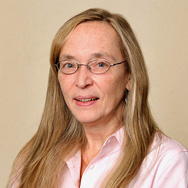Career
Robey joined NIDCR in 1983 and established reproducible methods for culturing human bone-forming cells, in order to study the development of mineralized matrix formation. In 1992, Robey was appointed chief of Skeletal Biology Section. Robey has served as a co-coordinator of the NIH Bone Marrow Stromal Cell Transplantation Center (2008-2013), and is currently the acting Scientific Director of the NIH Stem Cell Characterization Facility. She is a senior investigator in the skeletal biology section at NIDCR. [4] In early 2000s, she discovered dental stem cells. [5]
Research interests
Robey focuses on four main areas in skeletal cell biology: 1) determination of the characteristics and the biological properties of post-natal bone marrow stromal cells (BMSCs), a subset of which are multipotent skeletal stem cells (SSCs), able to recreate cartilage, bone, cells that support blood formation and fat cells in the marrow; 2) elucidation of the role of enzymatic matrix remodeling in the maintenance of SSC function; 3) characterization of the role that BMSCs/SSCs play in skeletal diseases; and, 4) development of techniques for cartilage and bone regeneration in human patients with skeletal defects. In addition to using BMSCs for tissue engineering, Dr. Robey and her group also explore the potential of pluripotent stem cells to differentiate into cartilage and bone as another source of cells for skeletal regeneration. [4]
This page is based on this
Wikipedia article Text is available under the
CC BY-SA 4.0 license; additional terms may apply.
Images, videos and audio are available under their respective licenses.
